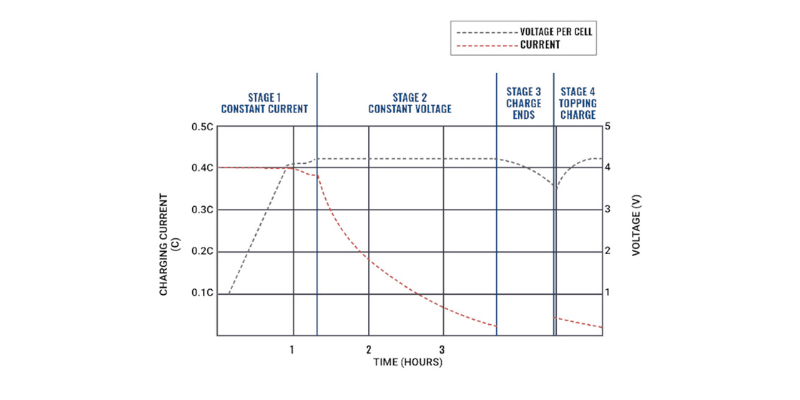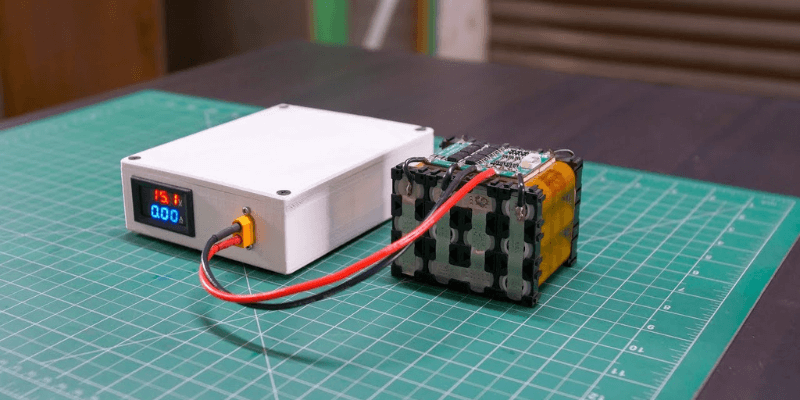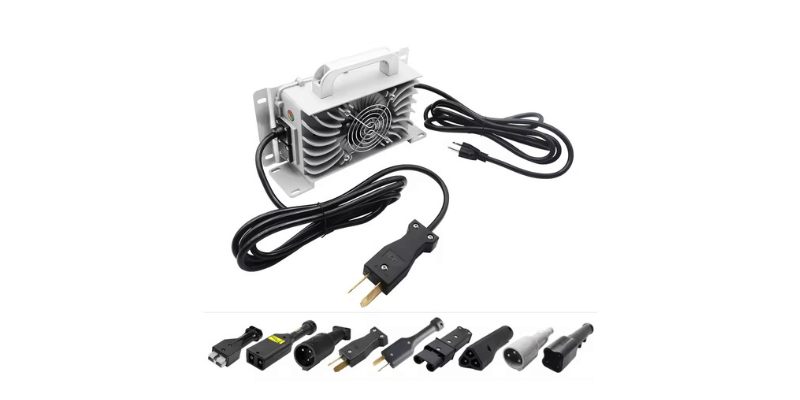If you purchased lithium iron phosphate (LiFePO4) batteries, you know they offer more cycles and are lighter than sealed lead acid (SLA) batteries. They also charge four times faster than SLA batteries. To charge a LiFePO4 battery, we recommend using a lithium battery charger designed for this chemistry.
Can A Lead Acid Charger Charge A Lithium Battery?
This post will highlight similarities in the charging profiles of lead acid and lithium batteries. However, be cautious when using lead acid chargers for lithium batteries, as they can damage or undercharge them, reducing their capacity over time. There are significant differences lithium and lead acid batteries.
Sealed Lead Acid (SLA) Battery Charging Profile
It uses a three-stage method to charge a sealed lead acid battery: initial charge (constant current), saturation topping charge (constant voltage), and float charge.

In Stage 1, limit the current to prevent battery damage. Voltage rises and plateaus as it approaches full charge. This stage is critical and should typically be done at 10%-30% (0.1C to 0.3C) of the battery’s capacity.
Stage 2 begins when the voltage reaches its limit (14.7V for fast charging SLA batteries, 14.4V for others). Here, the current decreases until it falls below 5% of the rated capacity.
Stage 3, or float charge, maintains the battery’s full capacity during standby applications or storage to prevent self-discharge and sulfation damage to the plates.
LiFePO4 Battery Charging Profile
LiFePO4 batteries share the same constant current and voltage stages as SLA batteries but charge faster due to higher charge rates.

Stage 1 charging for a LiFePO4 battery typically occurs at 30%-100% (0.3C to 1.0C) of the battery’s capacity, completing in about one hour compared to four hours for SLA. Even at 0.5C, a LiFePO4 battery charges nearly three times faster than SLA.
Stage 2, necessary for reaching a 100% state of charge (SOC), takes six hours for SLA and only about 15 minutes for LiFePO4. Overall, a lithium battery can fully charge in four hours, while an SLA battery takes around ten hours. In cyclic applications, lithium batteries can cycle several times daily versus once for lead-acid batteries.
Regarding Stage 3 charging profiles, a LiFePO4 battery does not require a float charge like lead-acid and should not be stored at full SOC long-term. Instead, it should cycle fully every 6-12 months and retain only a 50% SOC during storage.
In standby applications with low self-discharge rates, lithium batteries maintain nearly full capacity even without charging for up to a year. For longer durations, a topping charge based on voltage is recommended, especially for batteries with Bluetooth or Wi-Fi functions.

Lithium Battery Charging Characteristics
Voltage And Current Settings During Charging
The full charge open-circuit voltage (OCV) for a 12V SLA battery is 13.1V, while it is 13.6V for a 12V lithium battery. A battery will be damaged only if the charging voltage significantly exceeds its full charge voltage. Therefore, keep an SLA battery below 14.7V and below 15V for lithium batteries during Stage 2 charging. For float charging for SLA, it is recommended around 13.8V.
A safe charging range between 13.8V and 14.7V exists for both types without causing damage. Chargers must match the battery’s capacity. Lithium batteries can charge at up to 1C, while lead-acid should remain below 0.3C. This means a 20AH lithium battery charges at up to 20A and a lead-acid at up to 6A.
The charge cut-off current is set at 5% capacity, so both batteries have a cutoff of 0.5A, typically determined by the charger’s settings.
Universal chargers often allow chemistry selection, optimizing the voltage range and determining when the battery is fully charged. They should shut off automatically for lithium batteries or switch to float mode for SLA batteries.

Lithium Batteries Are Replacing Sealed Lead Acid In Float Applications
Lithium batteries are often used in applications previously maintained by SLA batteries on float charge, such as UPS systems.
Concerns about safety have arisen, but it is generally safe to use a standard constant voltage SLA charger for lithium batteries if it meets certain conditions:
- No de-sulfating setting
- Fast/Bulk charge voltage of 14.7V
- Recommended float charge voltage of 13.8V
Note that some smart or multi-stage SLA chargers detect open circuit voltage (OCV). If a lithium battery is over-discharged and in protection mode (near 0V OCV), these chargers may assume the battery is dead and avoid charging it. In contrast, a charger with a lithium setting can attempt to recover an over-discharged battery.

Long Term Storage
When storing batteries long-term, storage requirements differ for SLA and lithium batteries.
First, the battery chemistry dictates the optimal state of charge (SOC) for storage. SLA batteries should be stored near 100% SOC to prevent sulfating, which diminishes capacity due to sulfate crystal buildup. Conversely, lithium batteries should be stored at about 50% SOC to maintain stability in the positive terminal and prevent permanent capacity loss.
Second, consider the self-discharge rate. SLA batteries have a high self-discharge rate and need float or trickle charging to stay close to 100% SOC. Lithium batteries have a lower discharge rate and may require minimal maintenance charging.

Recommended Battery Chargers
Always match your charger to the correct current and voltage for the battery. For instance, don’t use a 24V charger for a 12V battery.
Use a charger suited to your battery’s chemistry, considering notes on using an SLA charger with lithium batteries. Ensure that an SLA charger doesn’t have desulfation or dead battery modes when charging lithium batteries.
If you have questions about a charger’s compatibility with the lithium battery products, please email us for assistance.

